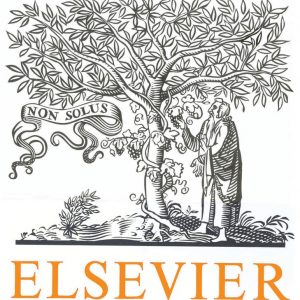دانلود رایگان مقاله لاتین طبقه بندی کارآمد حقوق مالکیت از سایت الزویر
عنوان فارسی مقاله:
ایجاد یک طبقه بندی کارآمد از حقوق مالکیت برای تعیین مناسب بودن یک مشارکت عمومی و خصوصی: یک چارچوب نظری جدید
عنوان انگلیسی مقاله:
Crafting an efficient bundle of property rights to determine the suitability of a Public‐Private Partnership: A new theoretical framework
سال انتشار :2016

برای دانلود رایگان مقاله طبقه بندی کارآمد حقوق مالکیت اینجا کلیک نمایید.
بخشی از مقاله انگلیسی:
2. Current theory and practice on assessing the suitability of a PPP
2.1. Direct approaches 2.1.1. Ascertaining VfM To assess whether a project delivered as a PPP yields long-term efficient outcomes and whether a PPP is a suitable mode of procurement, it is commonplace for governments to compare VfM from a PPP mode to VfM from traditional government financed projects (or non-PPP mode). VfM can be considered an economic concept that incorporates productive efficiency including, among other things, project finance principles (Productivity Commission, 2014, p. 70). In essence, VfM distils to achieving the best ratio between cost and benefits or f(costs/benefits) through the acquisition of infrastructure in whole-life terms. A key impediment to directly ascertaining VfM arising from PPP versus non-PPP procurement is the intractability of data, particularly with respect to surfacing and measuring costs and benefits in the operations and maintenance stage of a facility. This is because costs are whole-life and include both internal and external transaction costs that are much less observable than production costs (comprising finance, design, construction, operations and maintenance costs). Meanwhile, benefits relate largely to the effects of the facility on the core activity, and this can be difficult to objectively isolate and evaluate (KPMG and University College London, 2010). Indeed, the National Audit Office (2011) noted that, “There is no clear data to conclude whether the use of PFI has led to demonstrably better or worse value for money than other forms of procurement”. Furthermore, VfM is a cumulative concept that would benefit from a longitudinal study of the entire life of a representative sample of PPPs and non-PPPs (Henjewele et al., 2011). Even if this data were available, a fundamental constraint is the extent to which it reflects PPP and non-PPP cases that have been efficiently delivered; that is, with optimal procurement decisionmaking from the procurement decision across the asset's entire life. This decision-making includes efficient tendering, governance (including design decision-making rights) and the exercise of real options in operations. 2.1.2. Estimating VfM As with direct ascertainment, the comparative estimation of VfM from PPP and non-PPP procurement suffers from intractability of data and, more specifically, from the lack of historical data upon which to base estimates of future cash flows. Furthermore, the estimation of capital costs in major and mega projects is notoriously inaccurate and, in the context of this paper, not least because of the lack of accountability of project promoters (Sanderson, 2012). Indeed, there is substantial controversy surrounding the veracity of the Public Sector Comparator (PSC) that attempts to directly estimate the Net Present Value (NPV) of a project delivered via traditional government finance (based on a reference design) in order to compare it to a number of PPP bids (Winch and Schmidt, 2016). 2.2. Indirect approaches 2.2.1. Multi-Attribute Utility Approach The Multi-Attribute Utility Approach (MAUA) is a very popular technique that examines the criteria of clients and the preferences of expert weightings for procurement modes as the basis of procurement decision-making (Chang and Ive, 2002). In practice—for example, in Australia—Procurement Options Analysis (POA) within the National PPP Policy Framework provides an approach to assessing the viability of PPP against other procurement methods that is consistent with MAUA (Infrastructure Australia, 2008).
برای دانلود رایگان مقاله طبقه بندی کارآمد حقوق مالکیت اینجا کلیک نمایید.
کلمات کلیدی:
[DOC]property outline - NYU School of Law www.law.nyu.edu/sites/default/files/upload_documents/wyman_s03.doc Can divide rights differently (Property as a bundle of sticks) ... Determining what constitutes property is a policy judgment (Charles Reich – The New Property (1964)) ..... i) Most efficient when greatest gap b/w benefits and costs ...... (ii) Suitability to location (can consider local norms and actions of others in the neighborhood). [PDF]PROPERTY OUTLINE I. THE INTERDEPENDENCE OF ... - Sites@Duke https://sites.duke.edu/wlsa/files/2012/06/Property-Outline.pdf Property is not an indivisible whole—bundles of entitlements ... Has to define rights, rights determine what will be protected. b. ... Utilitarianism, social welfare and efficiency v. ..... Suitability of particular use/enjoyment invaded to the character of. [PDF]Efficient Remedies for Breach of Warranty - Duke Law Scholarship ... scholarship.law.duke.edu/cgi/viewcontent.cgi?article=3984&context=lcp by K Chapman - 1989 - Cited by 18 - Related articles GREENBERG, RIGHTS AND REMEDIES UNDER U.C.C. ARTICLE 2, at 319 (1987); Priest, supra note 6, at ... the implied warranty of merchantability, and suitability is promised in the ... product, such as house paint, will last for a certain number of years. ..... bundle the insurance and the product in order to achieve price. 3.2 Specification of property rights - Property Rights and ... www.treasury.govt.nz/publications/research-policy/wp/2003/03-02/03.htm Figure 1 – Six characteristics of efficient property rights: Source: Scott (1988) and ... right to constrain how any particular right or bundle of rights can be exercised). ... Exclusion – right to determine who will have access rights and withdrawal ...
